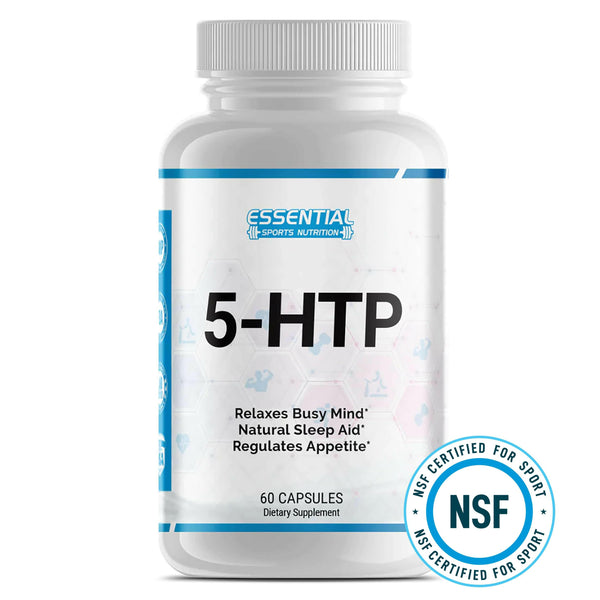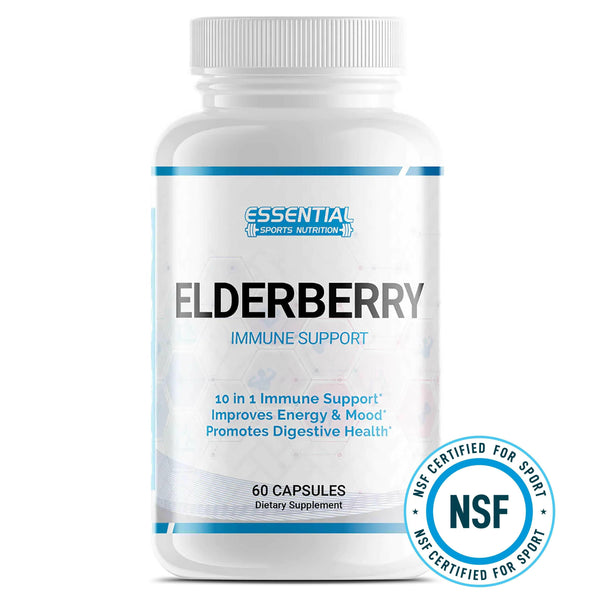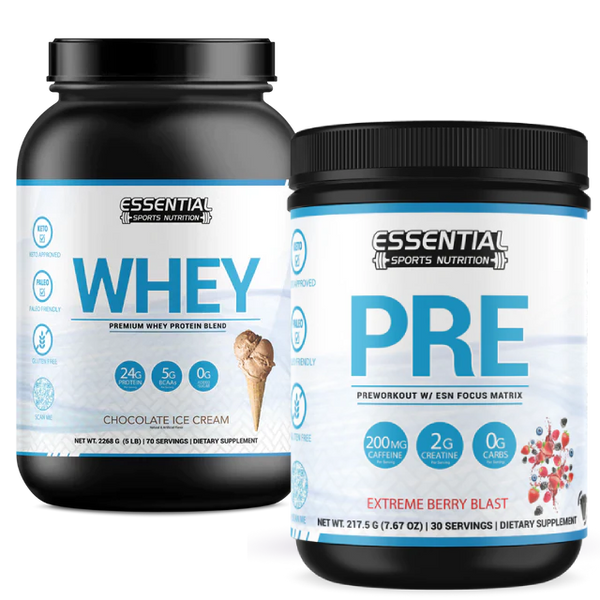Calf Exercises for Mass: The Perfect Routine To Build Bigger Calves
Looking to sculpt your calves? It can be hard, but with the right steps, you can do it. You should work out both main calf muscles for better looks and performance. This guide will show you the best calf exercises.
If you're stuck in your workouts or just starting, learning to target your calves is key. Let's change how you train and use new exercises to grow your calves. With consistency, your calves will get bigger and you’ll get stronger.

Key Takeaways
-
Understand the fundamental strategies for a calf workout for mass that aligns with your goals.
-
Learn why bigger calves don't just promote aesthetics but enhance overall stability and performance.
-
Discover how to tailor your calf muscle workouts to effectively build and strengthen your lower legs.
-
Gain insight into the importance of both variety and consistency in your workout routine.
-
Develop a clearer path to integrating effective calf exercises that suit your fitness level and progress.
Understanding the Anatomy of the Calf Muscle and Lower Leg

Starting your lower body strength journey? Know the anatomy of the calf first. This helps tailor your calf exercise plan for growth and function. To build a good calf, focus on its two main muscles: the gastrocnemius and the soleus.
The Importance of Calf Muscle Development
Calf muscle development boosts leg strength and stability. It's key for walking, running, and jumping. Working on your calf strength exercises enhances lower leg power. This is great for sports and physical activities.
How Calf Muscle Structure Influences Exercise Selection
The right calf exercise depends on your calves' unique build. The gastrocnemius likes fast, heavy workouts. The soleus thrives on endurance tasks. Knowing this lets you pick exercises that target both for optimal calf muscle development.
| Gastrocnemius | Primarily fast-twitch fibers | Best engaged with heavy weights and lower reps |
|---|---|---|
| Soleus | Primarily slow-twitch fibers | Best engaged with lighter weights and higher reps |
| Recommended Exercises | Jumping exercises, standing calf raises | Seated calf raises, endurance calf exercises |
Setting up Your Calf Training Program to Grow Your Calves

To grow your calves, you need a strong calf training program. This program should focus on getting them bigger. It's important to train your calves 2-3 times a week and allow them to rest and grow.
Getting stronger is key. You do this by slowly lifting more weight or resistance. Make sure to pick the best calf exercises for this. Also, keep track of your progress in a log.
Resting between sets helps your muscles grow. Usually, a 60-90 seconds break is good. Listen to your body, though. If you need more rest, take it. It's also crucial to rest well after working out. This helps any muscle group repair and get stronger.
Adding calf exercises to your leg days helps with balanced growth. Mix different exercises for the best results. Here's an example weekly plan focusing on calves:
| Day | Calf Exercises | Reps & Sets | Notes |
|---|---|---|---|
| Monday | Standing Calf Raises | 4 sets of 12 reps | Focus on the full range of motion |
| Wednesday | Seated Calf Raises | 3 sets of 15 reps | Controlled tempo, squeeze at the top |
| Friday | Farmers Walk on Toes | 2 sets of 1 min walk | Progressive overload with weights |
| Sunday | Calf Press on Leg Machine | 4 sets of 10 reps | Final set to failure |
Don't forget to stretch after your best calf workout. Stretching helps to keep you flexible and prevent injuries. Remember, improving your best calf exercises takes time. Stay patient and keep working hard. You will reach your goals in time.
Best Calf Exercises to Increase Calf Size and Strength

Starting a journey to increase calf size helps with looking great and getting stronger. It's important to include a special calf workout in your plan. Let's explore the best exercises for stronger calves.
Seated Calf Raise: Key Technique Tips
The seated calf raise focuses on your soleus muscle. Start by sitting and bending your knees, keeping your feet flat. Push up from your feet's balls, keeping your core tight and back straight. Go slow to get the most from it.
Standing Calf Raise: Maximizing Muscle Growth
The standing calf raise works the soleus and gastrocnemius muscles. Stand with feet apart, go on your toes, and squeeze. Quality is more important than how heavy you lift to increase calf size.
Single-Leg Calf Raise: Benefits of Unilateral Training
The single-leg calf raise helps fix leg differences. It improves your balance by working on one leg at a time. Move slowly and controlled for muscle growth.
| Exercise | Primary Muscle Targeted | Benefits |
|---|---|---|
| Seated Calf Raise | Soleus | Enhances muscle endurance and strength in a seated position |
| Standing Calf Raise | Gastrocnemius and Soleus | Contributes to overall calf mass and peak formation |
| Single-Leg Calf Raise | Gastrocnemius and Soleus | Improves balance and addresses muscle imbalances |
For a good calf workout, mix these top exercises. Alternate seated and standing raises. Add single-leg calf raises for balance and stronger calves. Keep it up, and you'll see your calves grow and your fitness improve.
Calf Exercises for Building Mass: The Core of Your Workout Routine

To build muscle, focusing on calf exercises for mass is key. Consistency and putting these exercises at the heart of your routine are important. It's not just what exercises you do, but also their order.
To grow your calves, train them often and hard. Let's see the best order for calf exercises. Start your leg day with them so they get full attention. Begin with heavy standing calf raises, then go for seated ones to build mass.
Starting with calf training empowers peak performance and mass growth.
Now, let's keep calves a focus in your muscle-building. Below is a table showing the best workout order.
| Stage of Workout | Recommended Calf Exercise | Notes |
|---|---|---|
| Warm-Up | Light Jogging or Jump Rope | Gets the calves ready for hard work |
| Initial | Standing Calf Raise (Heavy Load) | Use low reps, aim for toughness |
| Mid-Workout | Seated Calf Raise (Moderate Load) | Works the soleus muscle just right |
| Latter-Workout | Single-leg Calf Raise (Body-weight) | Improves endurance, balance |
This order makes sure calves get enough attention for even growth. Mix calf exercises for mass with other leg workouts. This makes your legs strong and balanced.
Finally, don't forget about calves in your workout. Regular effort and smart planning will make your calves grow. You'll get the strong, defined calves you want.
Adding Intensity to Your Calf Workouts to Build Muscle
If you want to grow your calf muscles, add more intensity to your workouts. Techniques like drop sets and supersets really help. They make your muscles work hard, which is great for growth.
Drop Sets and Supersets for Enhanced Calf Training
With drop sets, you keep going until you can't anymore. Then you lower the weight and keep going. This works your calves a lot. Supersets mean doing two exercises without stopping. It makes your workout tough but quick.
Navigating the Leg Press Machine for Calf Development
The leg press machine is not just for quads and hamstrings. You can also train your calves with it. Just adjust your feet and press. This lets you use big weights safely. It helps your calves grow. But remember, go slow to avoid getting hurt and to keep getting better.
Use these cool methods for strong calves. Be steady and slowly make your workouts harder. That's how you'll see your muscles grow.
How to Properly Execute Effective Calf Exercises for Muscle Growth

To get strong legs, learning how to do calf exercises right is key. Calf raises are important for building muscle. Let's look at the best ways to do these exercises for great results.
Achieving Full Range of Motion for Maximum Gains
For the best calf workouts, doing each move fully is important. This works your muscle fibers well, helping your calves grow strong. Make sure to lift and lower your heels properly!
Balance and Stability: Key Factors for Effective Training
Your balance and stability are very important for calf exercises. Moving smoothly helps your balance and makes exercises work better. It makes your calf workouts better and helps in other sports, too.
It's important to focus on doing exercises the right way. Don't rush your reps. Move carefully to work your muscles more. Doing this will help you build strong calf muscles.
Calf Workout for Mass: Incorporating Weights and Resistance

Looking to add weight to your calf workouts is important. You must do it as carefully as when you started with no weight. You need to add pounds safely and make sure your body can take the extra workload with good form.
When to Add Weight and How Much
Before adding weight, be sure you can do the moves well without it. Once you see better endurance and strength, it's time to add a little more weight. Increase the weight by 5-10% at most. This helps your calves get used to the change without getting hurt.
Dumbbell-Assisted Calf Workouts
Using a dumbbell in your calf workouts is a great next step. For moves like calf raises, hold the weight in one hand and use the other for balance. Keep your weight even and knees a bit bent as you lift onto your toes.
| Exercise | Position and Form | Reps and Sets |
|---|---|---|
| Dumbbell Standing Calf Raise | Stand with feet hip-width apart, dumbbells at your sides, and raise heels high. | 3 sets of 12 reps |
| Dumbbell Seated Calf Raise | Seated with dumbbells on knees, lift heels by pressing the balls of your feet down. | 3 sets of 15 reps |
| Dumbbell Single-Leg Calf Raise | Stand on one leg with a dumbbell in hand, the other leg bent, and raise heel upwards. | 3 sets of 10 reps each leg |
It's not just about how much weight you can lift. Calf growth also depends on doing each rep right. Focus on your form to make every lift count. This approach will help you grow bigger calves.
Assessing Your Progress: Tips for Building Big Calves

Building bigger calves means always checking your progress and changing your workout plans. It's not only about hard work; it's also about working smart. Let's see how to measure calf growth and change your routine for better results.
Measuring Calf Growth Over Time
It's important to measure progress. That's why measuring calf growth is key. Measure your calves every three to four weeks with a tape. Also, take photos to visually see the changes. This helps you see both small and big improvements in your workouts.
Adjusting Your Routine for Continuous Muscle Growth
When your calves get used to workouts, change is needed. Adjusting your routine is critical when you hit a plateau. Add new exercises, change weight, reps, and sets. Also, think about how long you rest. These changes help keep your goals achievable.
If you're not sure how to change your routine, look at the table below:
| Month | Workout Changes | Assessed Calf Size Increase |
|---|---|---|
| 1-3 | Beginner calf muscle workouts; focus on high reps with moderate weight | Initial growth, muscle conditioning |
| 4-6 | Introduce drop sets and increase the weight | Continued growth; observe changes in definition |
| 7-9 | Include unilateral exercises for balance | Improvement in symmetry and size |
| 10+ | Periodic assessment and routine variation based on progress | Sustainable growth, overcoming plateaus |
Keep checking your progress and adjust your plan as needed. This is key for getting big, strong calves. Don't become too comfortable. Aim for ongoing muscle growth with these personalized tips.
Conclusion

There are many ways to grow and strengthen your calves. Knowing about calf muscles helps you exercise better. This is key to getting strong leg muscles.
To have great lower legs, follow a good workout plan. Include the best calf exercises we mentioned. Pick those that fit your body and goals.
Start slow and keep at it. Getting strong calves takes time and change. Keep pushing, track your growth, and test your limits. You can have the strong calves you want. Just stick with it and work hard every day.
Calf Muscle Exercises FAQs
Q: What are the best calf exercises for mass?
A: Some of the best calf exercises for mass include seated calf raises, standing calf raises, single-leg calf raises, and calf raises using a calf raise machine.
Q: How can I build muscle in my calves?
A: To build muscle in your calves, focus on performing calf exercises that target both the gastrocnemius and soleus muscles, such as calf raises and variations of calf raises.
Q: What is the anatomy of the calf muscles?
A: The calf muscles consist of two main muscles: the gastrocnemius, which is the larger muscle on the back of the lower leg, and the soleus, which is a smaller muscle located underneath the gastrocnemius.
Q: How can I grow my calves with a good calf workout?
A: To grow your calves, it is important to perform a variety of calf exercises, use correct form, progressively increase the weight or resistance, and ensure proper nutrition and recovery.
Q: What are some tips for building bigger and stronger calves?
A: To build bigger and stronger calves, incorporate a mix of heavy resistance training, high-volume workouts, plyometric exercises, and adequate rest and recovery into your calf training routine.
Q: How often should I train my calves for optimal muscle growth?
A: It is recommended to train your calves 2-3 times per week with a combination of exercises targeting different parts of the calf muscles to promote muscle growth and avoid overtraining.
Q: Is it necessary to use a calf raise machine for calf exercises?
A: While a calf raise machine can help target the calf muscles, you can also achieve effective results with bodyweight exercises, dumbbells, or resistance bands for calf training.
Q: What are some common mistakes to avoid when doing calf exercises?
A: Some common mistakes to avoid during calf exercises include using too much weight, not full range of motion, neglecting the eccentric phase, and not varying your calf workout routine.




























